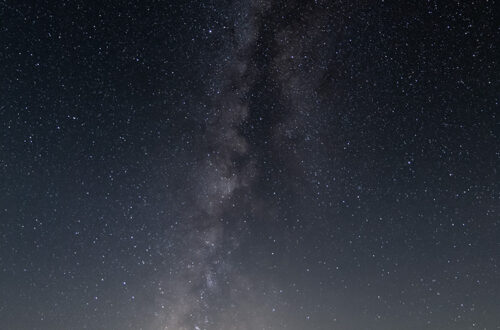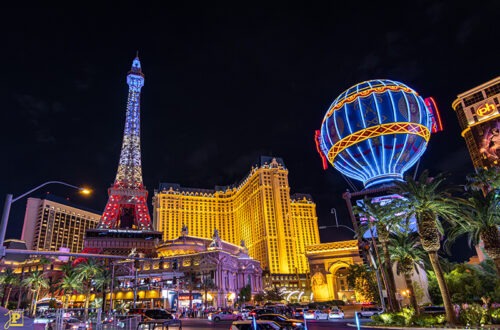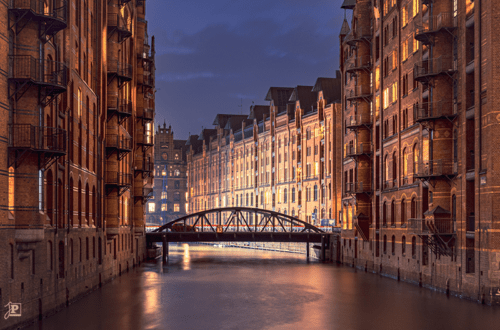Winter Forest
When it’s snowing in winter and you have time off, there’s really only one thing left to do: grab your camera (and your dog) and get out into nature! All that is left is having a little luck with the weather.
Snowy Landscape
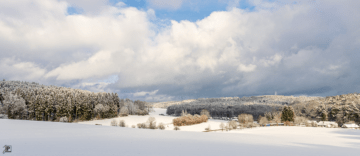
On a weekend at the beginning of January it finally had snowed again and I had some time off. At breakfast my wife, who got up before me and was already out walking the dog, tells me: “If you want to have winter photos, you absolutely have to go to the forest today! All trees and branches are hanging full of snow.” My curiosity is piqued, but it was still snowing lightly. Dark clouds make for dull light and smother any contrast.
Finally, around noon, the first gaps in the clouds opened up. The sun came out for a few moments at a time. But at the same time, it got warmer and started to thaw. The photo idea became a race against time – now or never. I decided to go with my all-around lens, the Sigma 17-70 mm ƒ/2.8-4. It offers the best compromise between image quality and versatility, and I don’t want to change lenses in the wet snow. With a spare battery in my pocket, I set off for the woods.
Leisurely, I walked a combination of the forest trails that we usually use for our rounds with the dog. By the end of the day, it was around three miles. And indeed: All trees, branches and bushes are hanging full of snow, its weight often bending them deep over the paths. Magical! I see only one other pair of footprints in the fresh snow from last night. Again and again, I turn around and let the fairy-tale landscape take me in.
Winter Forest
The weather makes it exciting since lighting conditions are constantly changing. There seem to be several layers of clouds in the sky, traveling at different heights and speeds. Sometimes it is dull and dark, sometimes the sun shines through a hole in the clouds and paints harsh shadows onto the landscape, sometimes it shimmers through a thin veil and bathes everything in a soft light. The sky shows itself sometimes in a bright and even blue, sometimes with dramatic cloud patterns.
Since colors are missing in the snowy forest, distinct contrasts with light and shadow are needed so that a picture does not look gray and boring in the end. Hence, I often find myself standing in one sport for several minutes, waiting for whether the sun will come out briefly. Or vice versa, the sun is there and I’m looking for the right angle. While walking along one path, I saw the sun flashing through gaps in the trees again and again, but the foreground was never quite right. Finally, at a fork in the road, I found the scene I was looking for.
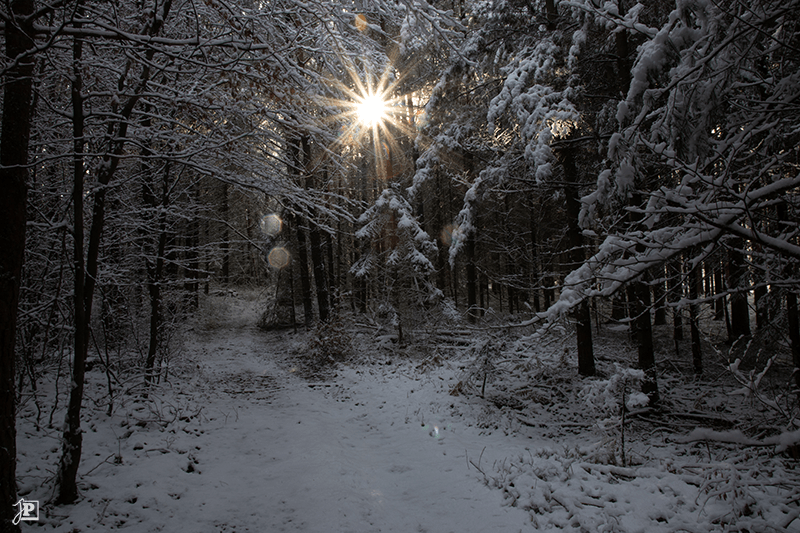
In order to realize the image as I had it in my head, two things were important: First, I closed the aperture to ƒ/16 so that a beautiful star shape would appear around the sun. Secondly, I took a series of five different exposures in order to have maximum freedom for editing at home afterwards.
In fact, I combined three of the five shots into a single HDR (High Dynamic Range) image in Lightroom, so as to get as much detail as possible both around the sun and in the darker shadows. When shooting directly into bright lights, lens flares, i.e., colorful spots of light in the image, are often unavoidable. While the two bright spots below the sun on the left don’t bother me, I removed the greenish spot further to the right in Photoshop.
To convey the desired winter mood, I played with the colors. I pulled the highlights towards yellow to give the sun’s rays some warmth, while I tinted the shadows slightly bluish to convey the cold. Additionally, I added a slight haze around the sun. Finally, I brightened the lower part of the image a bit.
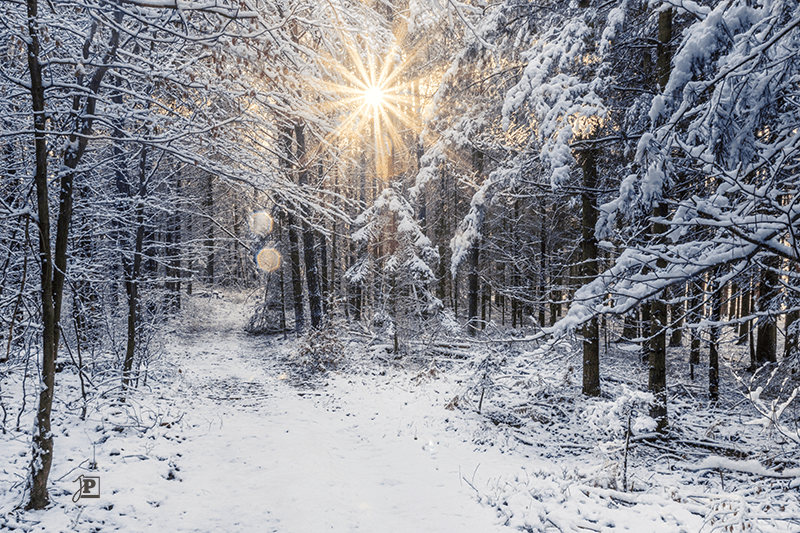
The Fairy Tale Pond
A little further into the forest there is a small pond by the side of the path. The pond is not particularly large – maybe 10 by 12 ft. – and in summer it is quite hidden by foliage and grasses. In winter, however, it’s easy to see, and here, too, the afternoon sun is perfect for a nice backlight shot.
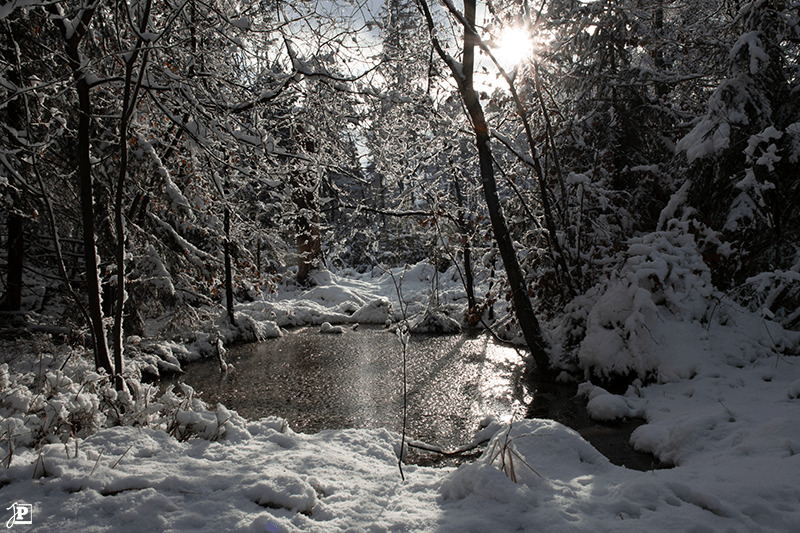
With this scene, the exposure bracketing over a total of five aperture stops was fully worthwhile: The darkest image provides all the details of the sky and sun, while the brightest image depicts the shadowy area on the right well. Together with the other exposures, this creates a balanced and detailed image. To get a better idea of the brightness differences, here is the whole series at a glance:

For me, the light reflections and the shadows on the ice surface create the special charm of the image. In post-processing I proceeded similarly as above, again I tinted the bright areas slightly yellow, the shadows slightly blue. On the other hand, I reduced the color saturation of the leaves that glow in a bright orange against the light, as well as on the lush green fir trees in the background, because I found these colorful blobs rather distracting.
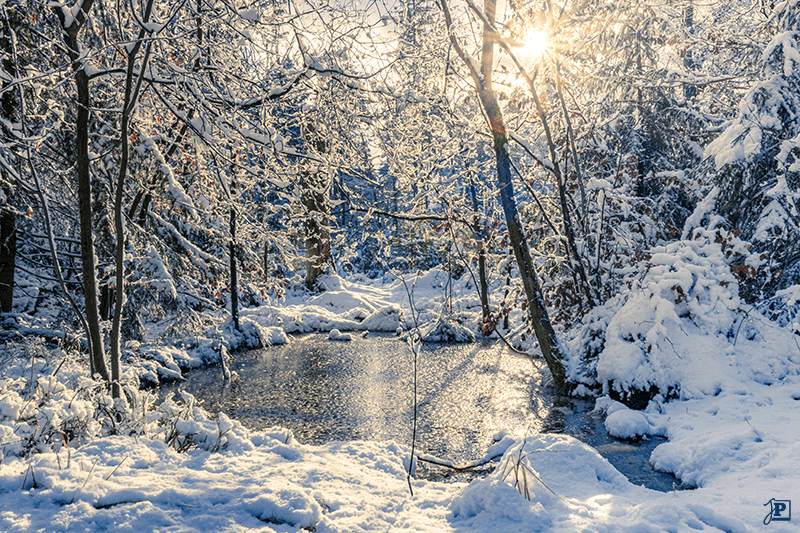
All in all, it was a very rewarding winter walk from a photographic point of view. Of course, I hope for more snow in the near future, but I will certainly visit again some of the photo spots at other times of the year.



